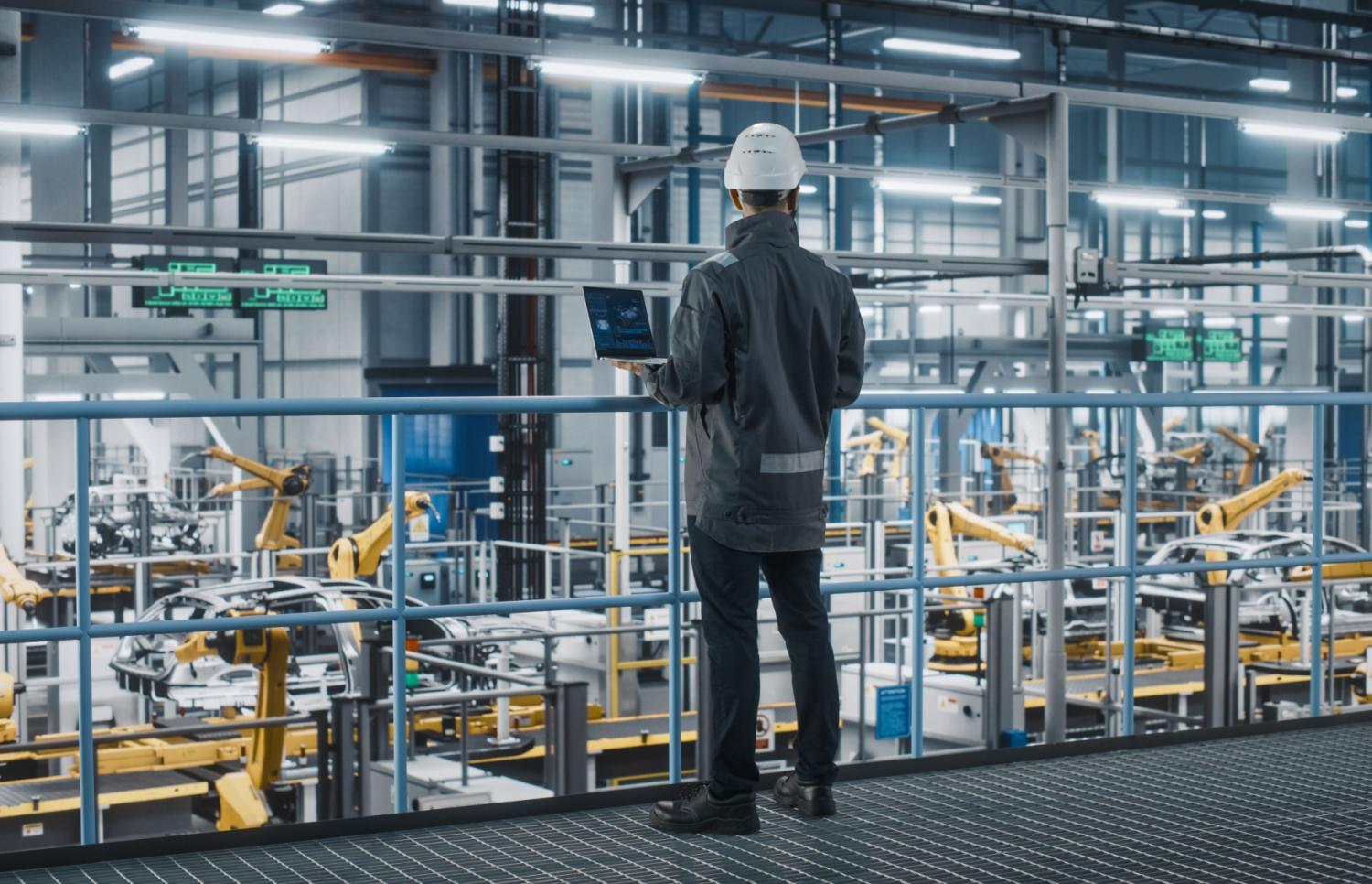The integration of robots into the workplace has been a subject of both fascination and concern in the rapidly changing landscape of technology. Fears that the rise of robots will lead to massive job losses and diminished worker autonomy echo historical techno-anxiety. Yet, the reality is more complex.
In addition to making certain jobs obsolete (think of switchboard operators), technological change can create new roles (think of social media influencers) or transform existing ones (consider robots helping humans lift heavy boxes in Amazon factories). And yet, in 2021, fewer than one in three Europeans believed that automation and artificial intelligence would create more jobs than they would destroy, reflecting widespread concerns about the impact of these technologies on the workforce.
The evidence on the employment effects of robotization is mixed. Some studies on robotization find displacement effects: a study of six European countries found one robot could displace 3.4 workers, and a similar study in the U.S. suggested a robot could displace 6.2 workers. Yet, job losses in certain sectors such as manufacturing could be offset by job creation in other sectors. Against this backdrop, the impact of robot adoption for workers’ job content and job quality remains largely unexplored.
In a recent paper published in Research Policy, we study how robot adoption affects work meaningfulness, i.e., the extent to which workers perceive their work as socially valuable, significant, or purposeful. We also examine robots’ impacts on workers’ sense of competence, autonomy, and relationships with colleagues and clients (i.e., self-determination). Self-determination is about the extent to which workers experience autonomy, competence (e.g., a sense of mastery and skill development), and relatedness (i.e., good relationships with colleagues and superiors). These factors are key to workers’ effort and motivation and are linked to their performance and behaviors on the job.
Industrial robots, which are the focus of our study, are capable of interacting with their environment by handling or moving objects and primarily perform routine manual tasks, such as reaching and handling. As such, robots can have both positive and negative effects on job quality. On the one hand, robots can take over back-breaking, dangerous, or dirty tasks, such as high-risk military operations, sewer cleanup, and milking cows, allowing humans to focus on more interesting and creative work. On the other hand, increased automation can lead to diminished human interactions and tasks with less scope for judgment, creativity, fewer learning opportunities, and decreased autonomy, especially for those performing routine or manual tasks.
To test the impact of robots on job quality, we use worker-level survey data for 2010, 2015, and 2021 from 20 European countries and 14 industries, ranging from the automobile to the construction sectors (See Figure 1). We combined these data with industry-level changes in robot density from the International Federation of Robotics.
Using rigorous statistical methods, our key finding is that robots harm work meaningfulness and autonomy. The results for competence and relatedness are also negative but less robust and smaller in magnitude.
How large are the effects we estimate? To illustrate, we consider the food and beverages industry, a top five industry in terms of robot adoption, and the automotive industry, the sector with the highest robot adoption. In 2020, the automobile industry utilized 629 robots per 10,000 workers, while food and beverages used 74 robots. If robot adoption in the food and beverages industry were to increase to match that of the automotive industry, we estimate a staggering 6.8% decrease in work meaningfulness and a 7.5% decrease in autonomy (our measures of work meaningfulness are standardized to have a mean of 50 and standard deviation of 10). Based on data from the EUKLEMS for 2020, nearly 4.5 million individuals worked in the food and beverages industry and about 3.3 million in the automotive industry across the countries in our study. Therefore, the impact sizes we document may seem small in isolation, but the cumulative and long-term effects are substantial given the large number of employees affected in such sizable industries.
Another way to think about our results is to consider that the average increase in robotization between 2005 and 2020 was 389% in our data, i.e., almost a four-fold increase. Using our findings, we calculate that for the average worker, the loss of work meaningfulness amounts to 3.4%. The drop for autonomy is 4%, and 2.7% and 1.3% for competence and relatedness, respectively (see Figure 2).
We explore the role of tasks and skills for the impact of robots on work meaningfulness and self-determination. We find that the negative consequences of robotization for work meaningfulness are the same, regardless of workers’ education level, skill level, or the tasks they perform.
There are interesting nuances when it comes to autonomy, however. Specifically, we do not find negative impacts on autonomy for employees in robot-adopting industries who work with computers—i.e., those who likely control, program, or oversee the robotic equipment. The detrimental effects of robotization on autonomy are entirely driven by those workers who perform repetitive tasks, who may be forced to work side-by-side with a robot and who may only perform micro-tasks, making their work even more repetitive. In addition, these effects are more pronounced among low-skilled and less-educated workers. The results concerning competence and relatedness are less robust across our different analyses, but they also appear to be negative for those engaged in repetitive tasks and positive for those working with computers.
What does all of this imply for the future of work? The year 2022 marked a new record, with 3.9 million new robot installations and 151 robots per 10,000 workers. Experts predict that robot adoption will continue at a fast pace in the future as robots become energy-efficient and equipped with Artificial Intelligence (AI) capabilities. While past automation waves have mainly taken over routine tasks, current and future technologies—including generative AI—will likely affect high-skilled individuals. This implies that many people’s jobs will change in the near future, and some tasks will be replaced, others modified, and new tasks will be created.
It is unclear whether our findings regarding the adoption of industrial robots will hold for the current and future technological waves. Yet, our work provides a useful benchmark against which we can start thinking about the expected consequences of these emerging technologies.
If technologies are adopted in a transparent and inclusive way, their consequences for job quality and tasks in the future do not have to be bleak. If firms have mechanisms in place to ensure that humans and machines cooperate, rather than compete, for tasks, machines can help improve workers’ well-being. It is therefore important to continue expanding our knowledge and understanding of what the actual effects of technology for workers are and to make sure that scientific studies focus not just on wages and employment but also job content and job quality.
-
Acknowledgements and disclosures
The Brookings Institution is financed through the support of a diverse array of foundations, corporations, governments, individuals, as well as an endowment. A list of donors can be found in our annual reports published online here. The findings, interpretations, and conclusions in this report are solely those of its author(s) and are not influenced by any donation.






